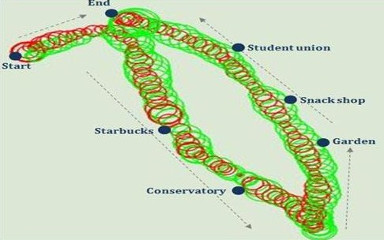
NeuroPlace: Making sense of a place short paper
The ability to detect mental states, whether relaxed or stressed, would be useful in categorizing places according to their impact on our brains and many other domains. Newly available, affordable and dry-electrode devices make electroencephalography headsets (EEG) feasible to use outside the lab, for example in open spaces and shopping malls. The purpose of this pervasive experimental manipulation is to analyze brain signals in order to label outdoor places according to how users perceive them with a focus on ?relaxing and ?stressful mental states. That is, when the user is experiencing tranquil brain waves or not when visiting a particular place. This paper demonstrates the potential of exploiting the temporal structure of EEG signals in making sense of outdoor places. The EEG signals induced by the place stimuli are analyzed and exploited to distinguish what we refer to as a place signature.